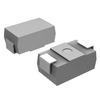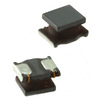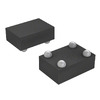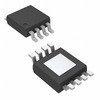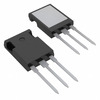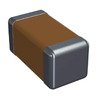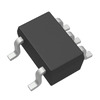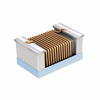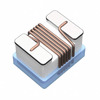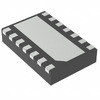Comparing LR44 and 357 Batteries: Interchangeability and Differences
The LR44 is categorized as an alkaline battery, whereas the 357 is recognized as a silver oxide battery. The unique chemical compositions of these batteries lead to distinct operational functionalities and energy efficiencies. This article delves into the distinctions between two seemingly similar yet functionally diverse types of batteries. Both batteries, while sharing identical physical dimensions, diverge substantially in their chemical makeup and performance characteristics, shaping their suitability for various applications. Through this exploration, we aim to dissect the intricate details of their chemical composition, voltage stability, and practical uses, enhanced by a subtle consideration of different perspectives that often influence choices.Catalog
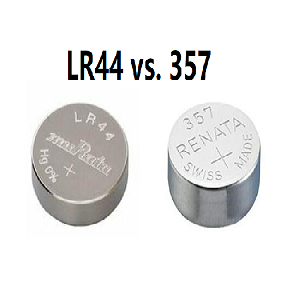
What is the LR44 Battery?
The LR44 is a zinc-manganese alkaline button cell known for its sturdy and reliable 1.5-volt output, functioning effectively in a temperature range between 0°C and 60°C. The ideal operational temperature for optimal performance is approximately 20°C. The LR44 utilizes zinc and manganese dioxide as its materials, making it an enduring and dependable power source. The alkaline electrolyte plays a role in maintaining its stable performance and relatively high energy density. This structure ensures consistent power delivery, making it suitable for small electronic devices. The LR44 operates across a wide temperature range (0-60°C), adapting to various environmental conditions. Optimal performance is achieved at around 20°C, where the chemical reactions and conductivity peak. Such batteries find applications in calculators, watches, and small medical instruments. In these devices, the reliability of the LR44 is highly valued.
What is the 357 Battery?
The 357 battery stands out in electronics because of its dependable performance and stable energy output. Known for its silver oxide chemistry, it excels in high-drain devices. Throughout its lifecycle, it maintains a nominal voltage of 1.5 volts. This stability is prized in precision-demanding gadgets such as watches, medical instruments, and laser pointers. The secret behind the 357 battery's longevity and efficiency lies in its silver oxide composition. This technology offers a higher energy density than alkaline batteries, extending its operational life. Its compact size, often labeled as SR44 or its equivalents in different markets, ensures compatibility with various small devices. The battery’s design promotes convenience and hassle-free usage. The 357 battery is a staple in small electronics, medical devices, and precision instruments. Its stable voltage profile, reliability, and high energy density make it an exceptional choice for applications demanding top-tier performance and accuracy
Specifications Between LR44 and 357
|
Type |
LR44 Specifications |
357 Specifications |
|
Battery Type |
Alkaline Manganese Batteries |
Silver Oxide Batteries |
|
Nominal Voltage |
1.5V |
1.55V |
|
Nominal Capacity |
120mAh |
150 mAh |
|
Operating Temperature Range |
-10℃ to 60℃ |
-10℃ to 60℃ |
|
Diameter (inch) |
0.457inch |
0.457inch |
|
Diameter (mm) |
11.6mm |
11.6mm |
|
Height (inch) |
0.213inch |
0.213inch |
|
Height (mm) |
5.4mm |
5.4mm |
|
IEC (JIS) |
LR44 |
- |
|
Mass (oz) |
0.0705oz |
- |
|
Mass (g) |
2g |
2.3g |
Differences in Features of LR44 and 357
Chemical Composition and Voltage Output
The LR44 battery leverages manganese dioxide, offering cost-performance benefits. With a stable voltage output and robust high-drain pulse discharge capabilities, it stands out. It's excellent resistance to leakage is attributed to its chemical stability and superior construction. In contrast, the 357 battery utilizes silver oxide, designated as ANSI-1131SO and IEC-SR44. It features a nominal voltage of 1.55 volts and a capacity of 195 mAh. A notable advantage of this battery is its very low impedance, which ensures efficient energy transfer and maintains optimal performance even under varying load conditions.
Performance and Shelf Life
LR44 Battery: The high-drain pulse discharge capability is ideal for devices needing intermittent power bursts, such as digital thermometers or laser pointers. Manganese dioxide chemistry ensures consistent performance, reflecting the practical demand for reliability.
357 Battery: The minimal self-discharge rate grants the 357 a longer shelf life. This makes it the preferred choice for precision instruments and watches that require sustained power over extended periods. The silver oxide composition is responsible for its durability and efficiency, enabling consistent performance without frequent replacements.
Dimensions and Performance Comparison
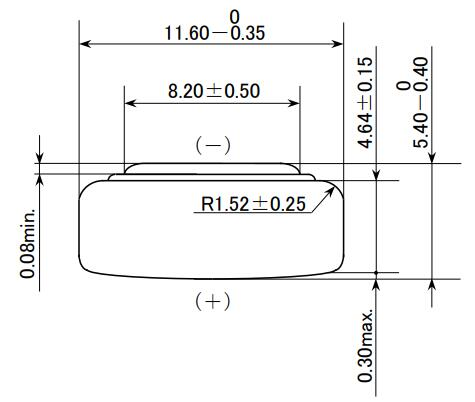
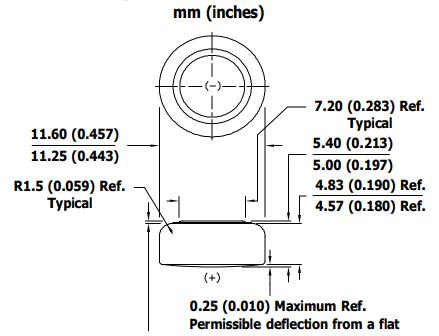
Silver-Oxide 357 Battery vs. Alkaline LR44 Battery
Voltage Characteristics
Alkaline LR44 batteries begin with a nominal voltage of 1.5 volts, which steadily decreases throughout the discharge process. This diminishing voltage can adversely affect devices that require a stable power supply, leading to noticeable performance deterioration over time. In contrast, silver-oxide 357 batteries start at a nominal voltage of 1.55 volts and maintain this voltage consistently during discharge. This characteristic makes them favorable for applications requiring unwavering voltage, such as medical instruments and precision electronic devices.
Capacity and Longevity
Alkaline LR44 batteries generally offer a nominal capacity ranging from 110-130 mAh. While manufacturing advancements can extend their shelf life to 4-5 years, the average shelf life remains around 3 years. Their cost-effectiveness and widespread availability render them practical for many general-purpose uses. However, their steady voltage decline over time could be problematic for specific applications. Silver-oxide 357 batteries, on the other hand, boast a higher nominal capacity of 150-200 mAh. Their lower self-discharge rate contributes to a longer shelf life, about 5 years. These attributes make them preferable in scenarios that demand long-term reliability and consistent performance, such as in calculators and certain medical devices.
Interchangeability of LR44 and 357
While LR44 and 357 batteries differ in their materials and chemical reactions, the 357 cell maintains a constant voltage of approximately 1.55 volts until nearly depleted. This offers superior performance compared to the LR44, whose voltage drops steadily over time. Hence, 357 batteries are preferred for applications demanding consistent voltage levels, such as precision calipers and certain watches, due to their stable voltage output and greater usable capacity. The difference in chemical compositions between LR44 and 357 cells influences their performance characteristics. The LR44 composed of alkaline materials. Alkaline batteries tend to gradually decrease in voltage as they discharge, making them less reliable for devices requiring a stable power supply. The 357 utilize silver oxide. Silver oxide cells provide a more consistent voltage throughout their lifespan for devices needing high precision.
Silver-Oxide Batteries vs. Alkaline Battery
|
Chemistry |
Alkaline |
Silver-Oxide |
|
Nominal Voltage |
1.5V |
1.55V |
|
End-Point Voltage |
1.0V |
1.2V |
|
Notes |
Voltage drops over time |
Very constant voltage |
|
Typical Labels |
LR44, 76A, AG13, LR1154, A76 |
SR44W, SR44, SR44SW, 157, 357, 303, SG13, AG13, S76, A76,
SR1154 |
|
Typical Capacity |
110-130 mAh |
150-200 mAh |
Frequently Asked Questions [FAQ]
1. What battery is equivalent to LR44?
Batteries equivalent to the LR44 include 76A, AG13, LR1154, and A76. These alkaline button cell batteries share similar dimensions and voltage characteristics, making them applicable in various small electronic devices. Such compatibility ensures ease of use across different models, allowing for seamless replacements.
2. Is an LR44 battery the same as 357?
No, the LR44 is an alkaline battery, while the 357 is a high-drain silver-oxide battery. Though similar in size and shape, their chemical compositions differ. The alkaline nature of the LR44 can lead to inconsistent performance in devices for the 357's stable voltage. Others recommend the 357 for applications demanding consistent power output, emphasizing the need to choose the appropriate battery for high-performance gadgets.
3. Do LR44 batteries have silver?
LR44 batteries do not contain silver. They are constructed using zinc and manganese dioxide. In contrast, silver oxide batteries like the SR44 do include silver. The absence of silver in LR44 makes these batteries more economical. However, the trade-off might be a reduction in efficiency for devices necessitating high precision and reliable power delivery.
4. Is a 357 battery the same as a LR44?
No, the 357 battery is a silver oxide battery known for its higher and more stable voltage output compared to the alkaline LR44. The 357 provides a longer lifespan and is favored for high-drain devices. Its extended longevity and consistent discharge curve render it a superior choice for demanding applications, where maintaining steady performance is required.
About us
ALLELCO LIMITED
Read more
Quick inquiry
Please send an inquiry, we will respond immediately.

Understanding the TIP42C Power Transistor: Pinout, Datasheet Breakdown, and Usage
on October 18th

MPX5010DP: Pinout, Features, and Datasheet
on October 18th
Popular Posts
-

What is GND in the circuit?
on January 1th 3291
-

RJ-45 Connector Guide: RJ-45 Connector Color Codes, Wiring Schemes, R-J45 Applications, RJ-45 Datasheets
on January 1th 2824
-

Understanding Power Supply Voltages in Electronics VCC, VDD, VEE, VSS, and GND
on November 20th 2684
-

Fiber Connector Types: SC Vs LC And LC Vs MTP
on January 1th 2271
-

Comparison Between DB9 and RS232
on January 1th 1891
-

What Is An LR44 Battery?
Electricity, that ubiquitous force, quietly permeates every aspect of our daily lives, from trivial gadgets to life-threatening medical equipment, it plays a silent role. However, truly grasping this energy, especially how to store and efficiently output it, is no easy task. It is against this background that this article will focus on a type of coin cell battery that may seem insignificant on the...on January 1th 1849
-

What Is RF and Why Do We Use It?
Radio Frequency (RF) technology is a key part of modern wireless communication, enabling data transmission over long distances without physical connections. This article delves into the basics of RF, explaining how electromagnetic radiation (EMR) makes RF communication possible. We will explore the principles of EMR, the creation and control of RF signals, and their wide-ranging uses. The article ...on January 1th 1818
-

Understanding the Fundamentals:Inductance Resistance, andCapacitance
In the intricate dance of electrical engineering, a trio of fundamental elements takes center stage: inductance, resistance, and capacitance. Each bears unique traits that dictate the dynamic rhythms of electronic circuits. Here, we embark on a journey to decipher the complexities of these components, to uncover their distinct roles and practical uses within the vast electrical orchestra. Inductan...on January 1th 1817
-

CR2430 Battery Comprehensive Guide: Specifications, Applications and Comparison to CR2032 Batteries
What is CR2430 battery ?Benefits of CR2430 BatteriesNormCR2430 Battery ApplicationsCR2430 EquivalentCR2430 VS CR2032Battery CR2430 SizeWhat to look for when buying the CR2430 and equivalentsData Sheet PDFFrequently Asked Questions Batteries are the heart of small electronic devices. Among the many types available, coin cells play a crucial role, commonly found in calculators, remote controls, and ...on January 1th 1806
-

Comprehensive guide to hFE in transistors
Transistors are crucial components in modern electronic devices, enabling signal amplification and control. This article delves into the knowledge surrounding hFE, including how to select a transistor's hFE value, how to find hFE, and the gain of different types of transistors. Through our exploration of hFE, we gain a deeper understanding of how transistors work and their role in electronic circu...on November 20th 1796


